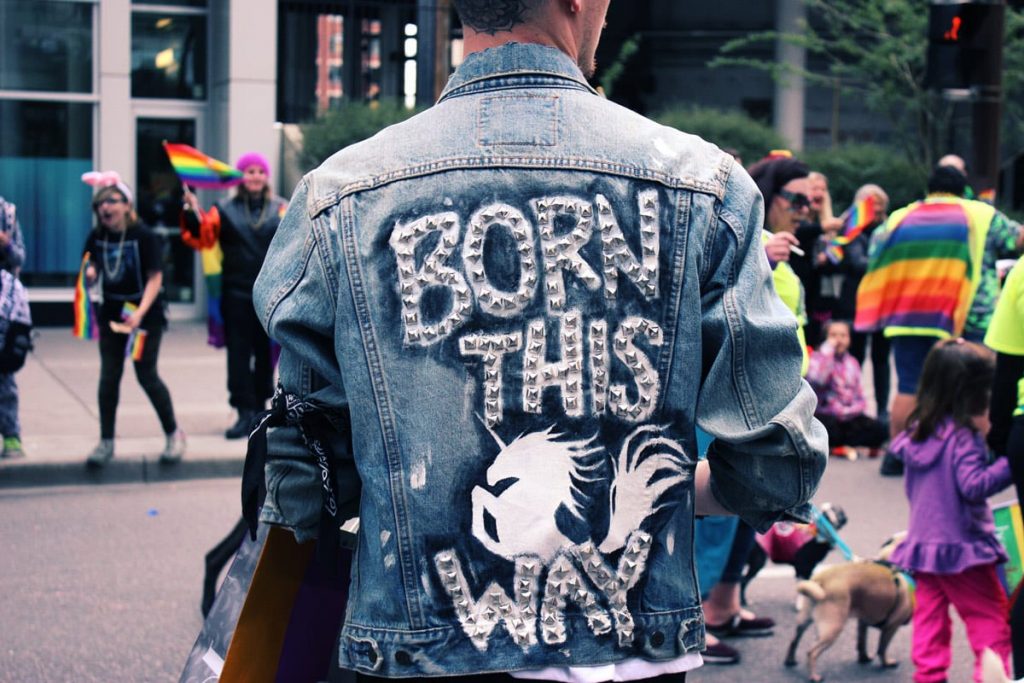This week on www.rtor.org we observe National Suicide Prevention Week (Sept. 9-15, 2018) with a guest blog post on suicide risk and prevention for LGBTQ youth. The theme of this year’s Suicide Prevention Week is “The Power of Connection.” This is a message that is especially relevant for LGTBQ youth. Discrimination and social isolation place them at much higher risk of suicide than most other groups. Today’s article by repeat guest blogger Nick Rudow offers many resources for LGTBQ youth to connect with help and support. – Jay Boll, Editor in Chief
For many LGBTQ teens, finding support and acceptance from their parents can be difficult, leading them to develop signs of depression, anxiety and suicidal thoughts. According to a report from the CDC, LGBTQ individuals in grades 7-12 are twice as likely to attempt suicide compared to straight people the same age. Several organizations are taking note of this, creating resources for LGBTQ youth to provide them with support and someone to talk to. Suicide prevention has become a major concern within the LGBTQ community, and many companies have developed ways to reach out to LGBTQ youth to help them work through their emotions.
The Facts on LGBTQ Youth Suicide
A school’s environment can be a scary place for an LGBTQ teen, as studies have shown over the years. According to research by the Gay, Lesbian and Straight Education Network, 55% of LGBTQ youth feel unsafe at school, and 74% say they have experienced verbal harassment because of their sexual orientation. This leads to an increased risk of mental health problems for LGBTQ youth and creates a hostile learning environment for them.
To provide support, schools are encouraged to create Gay-Straight Alliance clubs for students to join. Schools are also advised to develop “safe spaces,” where teens can go and talk to counselors and teachers without the threat of violence. But without a source of support and acceptance, LGBTQ youth can experience a multitude of mental health symptoms such as depression, anxiety and emotional distress. These symptoms can lead to addiction, as drugs and alcohol are often used as coping mechanisms for those struggling with mental health disorders.
Due to harassment and lack of support, some LGBTQ teens may develop substance abuse problems. For those living in rural areas, finding fellow LGBTQ youths can be challenging. Feelings of loneliness can fuel addiction and lead to dangerous consequences. If you’re struggling with depression or substance abuse, meeting new friends and spending time with supportive family members can be a great way to combat feelings of loneliness and can decrease your risk of suicidal thoughts or actions.
Sadly, there are many other factors contributing to the high suicide rate of LGBTQ youth. Due to conflict at home, many LGBTQ teens are left living on the street with no other place to go. According to the True Colors Fund, 40 percent of homeless youth identify as LGBTQ. The severe stress and anxiety caused by discrimination can lead to a variety of serious health problems, such as heart disease and high blood pressure. These issues contribute to an increased risk of mental health disorders, often leading to suicide. When physical health is damaged from homelessness or disease, mental health is also at risk of deteriorating. This happens to many LGBTQ youth who are under stress and experience suicidal thoughts or behavior. Fortunately, there are many resources available to LGBTQ youth to help them pull through difficult times in their lives.
Support Resources Available
There are several websites offering support to LGBTQ teens around the world, the most famous being the It Gets Better Project. Started by gay rights activist Dan Savage, this organization offers hope to LGBTQ youth with testimonials by celebrities and ordinary teens from across the country, sharing their stories of coming out and discovering their true identity. This website shows LGBTQ youth that there can be a bright future ahead of them and that indeed it does get better.
Other support websites include I’m From Driftwood, which features videos made by Americans around the U.S., telling their stories of self-acceptance and self-love. The Human Rights Campaign is one of the most recognized civil rights organizations in the LGBTQ community, and they have several resources for LGBTQ youth on their website. Suicide prevention is a key issue for all of these organizations, and specific hotlines dedicated to saving LGBTQ youth lives are being formed all across America.
LGBTQ Suicide Hotlines
According to research on mental health by Bradley University, “Globally, 350 million people suffer from depression, which makes it one of the most common specific disorders worldwide.” The rates for depression in LGBTQ youth are significantly high right now, and several organizations are helping to make that rate decrease. Toll-free and completely confidential, The Trevor Project offers a great suicide hotline for anyone in the LGBTQ community who’s struggling.
The National Suicide Prevention Hotline is the most well known and most used resource for those dealing with suicidal thoughts. Their website includes several pages of information on the LGBTQ community and how to help others. The LGBT National Youth Talkline is specifically designed to help LGBTQ youth, featuring peer counselors trained to deal with sensitive topics and situations. For those who can’t or don’t want to speak with anyone on the phone, the Crisis Text Line is available through text messaging with trained counselors.
Finding local LGBTQ centers can be a great way to meet others and build a healthy group of support. There are also local suicide hotlines that will be able to help you or a loved one in need. As a growing number of LGBTQ youth end up homeless due to conflict at home, discriminated against at school, or struggling with addiction because of substance abuse, the rate of suicide continues to increase. But there are many resources available, created by organizations fighting to help LGBTQ youth living happy and healthy lives. Perhaps, with the great work they’re doing, the risk of suicide for LGBTQ youth will lessen over time and no longer be the crisis that it is today.
If you or someone you know experiences mental health issues, it is important to seek help from a qualified professional. Our Resource Specialist can help you find expert mental health resources to recover in your community. Contact us now for more information on this free service to our users.
Author Bio: Nick Rudow is a freelance writer from Boise, Idaho and a graduate from the University of Montana’s Journalism School. His main writing focus is on issues affecting the LGBTQ community and mental health treatments.
Photo by Levi Saunders on Unsplash
The opinions and views expressed in this guest blog do not necessarily reflect those of www.rtor.org or its sponsor, Laurel House, Inc. The author and www.rtor.org have no affiliations with any products or services mentioned in this article or linked to herein.





